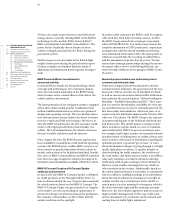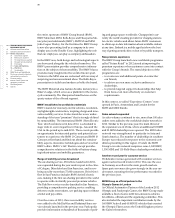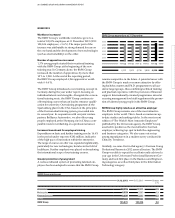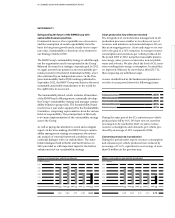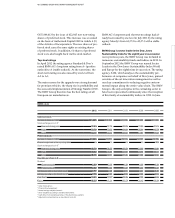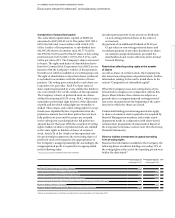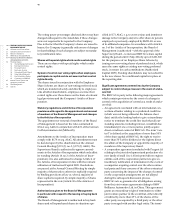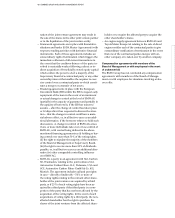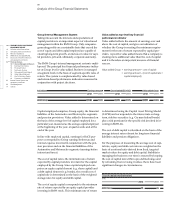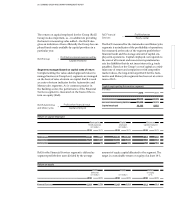BMW 2012 Annual Report Download - page 41
Download and view the complete annual report
Please find page 41 of the 2012 BMW annual report below. You can navigate through the pages in the report by either clicking on the pages listed below, or by using the keyword search tool below to find specific information within the annual report.
41 COMBINED GROUP AND COMPANY MANAGEMENT REPORT
Safeguarding the future of the BMW Group with
sustainable business practices
Commercial success, the responsible use of resources
and the assumption of social responsibility form the
basis for long-term growth and a steady rise in corpo-
rate value. Sustainability is therefore a key element in
our Strategy Number ONE.
The BMW Group’s sustainability strategy is valid
through-
out the organisation and is incorporated in the Group
Balanced Scorecard as a strategic corporate goal. In 2012
we again asserted our position as most sustainable pre-
mium provider in the field of individual mobility, a fact
also confirmed by an independent source: in the Dow
Jones Sustainability Index (DJSI) rankings published
in
September 2012, the BMW Group was listed as the most
sustainable automobile manufacturer in the world for
the eighth time in succession.
The Sustainability Board, which includes all members
of the BMW Board of Management, continually develops
the Group’s sustainability strategy and manages sustain-
ability initiatives group-wide. The Sustainability Board
meets twice a year and is supported by the Sustainability
Committee, comprising representatives from the various
fields of responsibility. The principal task of this body
is
to ensure implementation of the sustainability strategy
across the Group.
As well as paying due attention to social and ecological
aspects in decision-making, the BMW Group’s sustain-
ability management strategy encompasses the system-
atic analysis of external framework conditions and a
continual dialogue with our stakeholders. The stake-
holder
dialogues held in Berlin and San Francisco in
2012 provided us with important input for the further
enhancement of our sustainability strategy.
SUSTAINABILITY
Clean production: key milestone reached
The integration of environmental management in all
production processes enables us to reduce our use of
resources and minimise environmental impact. We see
this as an ongoing process. At an early stage we set
our-
selves the goal of a 30 % reduction in average resource
consumption and emissions per vehicle
produced for
the period 2006 to 2012, using the measurable parame-
ters energy, water, process wastewater, non- recyclable
waste and solvents. We also check the level of CO2 emis-
sions resulting from energy consumption. In actual fact,
we improved efficiency by more than a third (35.7 %),
thus surpassing our ambitious target.
A more detailed look at the fundamental parameters
over the six-year period shows the following picture:
Energy consumed per vehicle produced
in MWh / vehicle
3.00
2.80
2.60
2.40
2.20
2.00
08 09 10 11 12
2.80 2.89 2.75 2.46 2.44
Water consumption per vehicle produced
in m3 / vehicle
2.80
2.60
2.40
2.20
2.00
1.80
08 09 10 11 12
2.56 2.56 2.31 2.12 2.10
During the same period the CO2 emissions per vehicle
produced also fell by 30 %. We have now set ourselves
new targets to be reached by 2020: we aim to reduce
resource consumption and emissions per vehicle pro-
duced
by an average of 45 % compared to 2006.
Conserving resources in production
During the period under report, resource consumption
and emissions per vehicle produced were reduced by
an average of 11.6 %, equivalent to cost savings of more
than €9 million on the previous year.
Energy consumption – 26 %
Water consumption – 30 %
Process wastewater – 36 %
Non-recyclable waste – 65 %
Solvent emissions – 27 %





